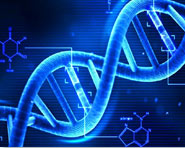


 النبات
النبات
 الحيوان
الحيوان
 الأحياء المجهرية
الأحياء المجهرية
 علم الأمراض
علم الأمراض
 التقانة الإحيائية
التقانة الإحيائية
 التقنية الحيوية المكروبية
التقنية الحيوية المكروبية
 التقنية الحياتية النانوية
التقنية الحياتية النانوية
 علم الأجنة
علم الأجنة
 الأحياء الجزيئي
الأحياء الجزيئي
 علم وظائف الأعضاء
علم وظائف الأعضاء
 الغدد
الغدد
 المضادات الحيوية
المضادات الحيوية|
Read More
Date: 12-10-2021
Date: 11-9-2021
Date: 27-8-2021
|
Dietary Reference Intakes (DRI)
Committees of U.S. and Canadian experts organized by the Food and Nutrition Board of the Institute of Medicine of the National Academy of Sciences have compiled Dietary Reference Intakes (DRI), which are estimates of the amounts of nutrients required to prevent deficiencies and maintain optimal health and growth. The DRI expands on the Recommended Dietary Allowances (RDA), which have been published with periodic revisions since 1941. Unlike the RDA, the DRI establishes upper limits on the consumption of some nutrients and incorporates the role of nutrients in lifelong health, going beyond deficiency diseases. Both the DRI and the RDA refer to long-term average daily nutrient intakes, because it is not necessary to consume the full RDA every day.
A. Definition
The DRI consists of four dietary reference standards for the intake of nutrients designated for specific life stage (age) groups, physiologic states, and gender (Fig. 1).
Figure 1: Components of the Dietary Reference Intakes (DRI).
1. Estimated average requirement: The average daily nutrient intake level estimated to meet the requirement of one half of the healthy individuals in a particular life stage and gender group is the Estimated Average Requirement (EAR). It is useful in estimating the actual requirements in groups and individuals.
2. Recommended dietary allowance: The RDA is the average daily nutrient intake level that is sufficient to meet the requirements of nearly all (97%–98%) individuals in a particular life stage and gender group. The RDA is not the minimal requirement for healthy individuals, but it is intentionally set to provide a margin of safety for most individuals. The EAR serves as the foundation for setting the RDA. If the standard deviation (SD) of the EAR is available and the requirement for the nutrient is normally distributed, the RDA is set at 2 SD above the EAR (that is, RDA = EAR + 2 SDEAR).
3. Adequate intake: An Adequate Intake (AI) is set instead of an RDA if sufficient scientific evidence is not available to calculate an EAR or RDA. The AI is based on estimates of nutrient intake by a group (or groups) of apparently healthy people. For example, the AI for young infants, for whom human milk is the recommended sole source of food for the first 6 months, is based on the estimated daily mean nutrient intake supplied by human milk for healthy, full-term infants who are exclusively breast-fed.
4. Tolerable upper intake level: The highest average daily nutrient intake level that is likely to pose no risk of adverse health effects to almost all individuals in the general population is the Tolerable Upper Intake Level (UL, or TUL). As intake increases above the UL, the potential risk of adverse effects may increase. The UL is useful because of the increased availability of fortified foods and the increased use of dietary supplements. For some nutrients, there may be insufficient data on which to develop a UL.
B. Using the dietary reference intakes
Most nutrients have a set of DRI (Fig. 2). Usually a nutrient has an EAR and a corresponding RDA. Most are set by age and gender and may be influenced by special factors, such as pregnancy and lactation in women . When the data are not sufficient to estimate an EAR (or an RDA), an AI is designated. Intakes below the EAR need to be improved because the probability of adequacy is ≤50% (Fig. 3). Intakes between the EAR and RDA likely need to be improved because the probability of adequacy is <98%, and intakes at or above the RDA can be considered adequate. Intakes above the AI can be considered adequate. Intakes between the UL and the RDA can be considered to have no risk for adverse effects. [Note: Because the DRI is designed to meet the nutritional needs of the healthy, it does not include any special needs of the sick.]
Figure 2: Dietary Reference Intakes for vitamins and minerals in individuals age 1 year and older. [Note: An RDA has been set for carbohydrate and protein (macronutrients) but not for fat.] EAR = Estimated Average Requirement; RDA = Recommended Dietary Allowance; AI = Adequate Intake; UL = Tolerable Upper Intake Level; — = no value established.

Figure 3: Comparison of the components of the Dietary Reference Intakes. EAR = estimated average requirement; RDA = recommended dietary allowance; AI = adequate intake; UL = tolerable upper intake level.



|
|
|
|
كل ما تود معرفته عن أهم فيتامين لسلامة الدماغ والأعصاب
|
|
|
|
|
|
|
ماذا سيحصل للأرض إذا تغير شكل نواتها؟
|
|
|
|
|
|
|
جامعة الكفيل تناقش تحضيراتها لإطلاق مؤتمرها العلمي الدولي السادس
|
|
|